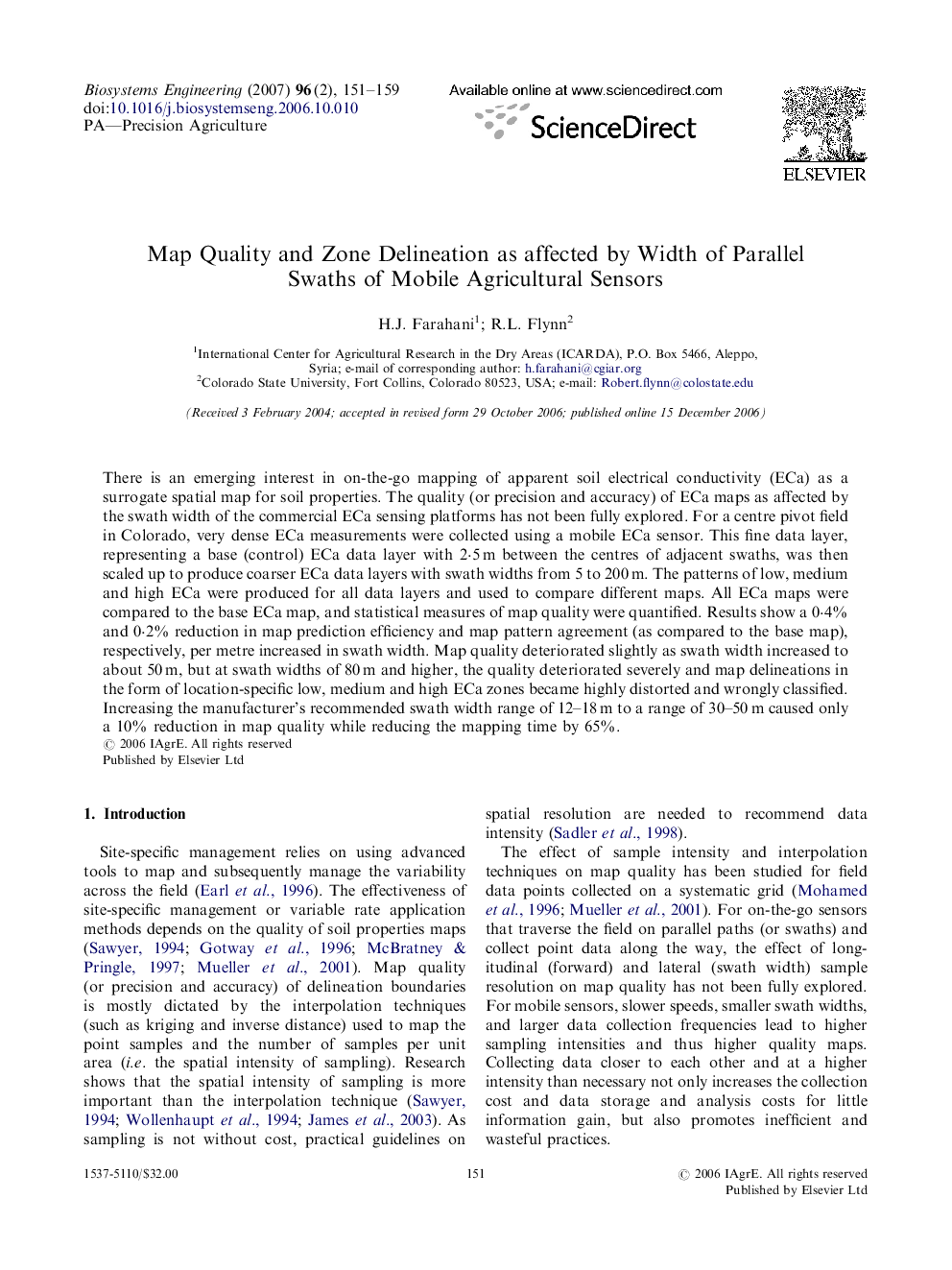| Article ID | Journal | Published Year | Pages | File Type |
|---|---|---|---|---|
| 1712520 | Biosystems Engineering | 2007 | 9 Pages |
Abstract
There is an emerging interest in on-the-go mapping of apparent soil electrical conductivity (ECa) as a surrogate spatial map for soil properties. The quality (or precision and accuracy) of ECa maps as affected by the swath width of the commercial ECa sensing platforms has not been fully explored. For a centre pivot field in Colorado, very dense ECa measurements were collected using a mobile ECa sensor. This fine data layer, representing a base (control) ECa data layer with 2·5 m between the centres of adjacent swaths, was then scaled up to produce coarser ECa data layers with swath widths from 5 to 200 m. The patterns of low, medium and high ECa were produced for all data layers and used to compare different maps. All ECa maps were compared to the base ECa map, and statistical measures of map quality were quantified. Results show a 0·4% and 0·2% reduction in map prediction efficiency and map pattern agreement (as compared to the base map), respectively, per metre increased in swath width. Map quality deteriorated slightly as swath width increased to about 50 m, but at swath widths of 80 m and higher, the quality deteriorated severely and map delineations in the form of location-specific low, medium and high ECa zones became highly distorted and wrongly classified. Increasing the manufacturer's recommended swath width range of 12-18 m to a range of 30-50 m caused only a 10% reduction in map quality while reducing the mapping time by 65%.
Related Topics
Physical Sciences and Engineering
Engineering
Control and Systems Engineering
Authors
H.J. Farahani, R.L. Flynn,
